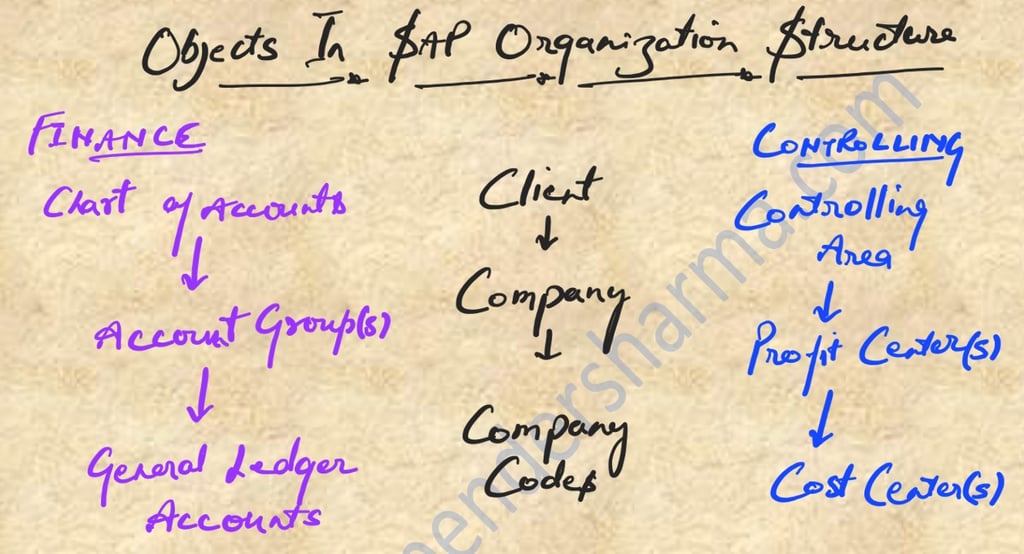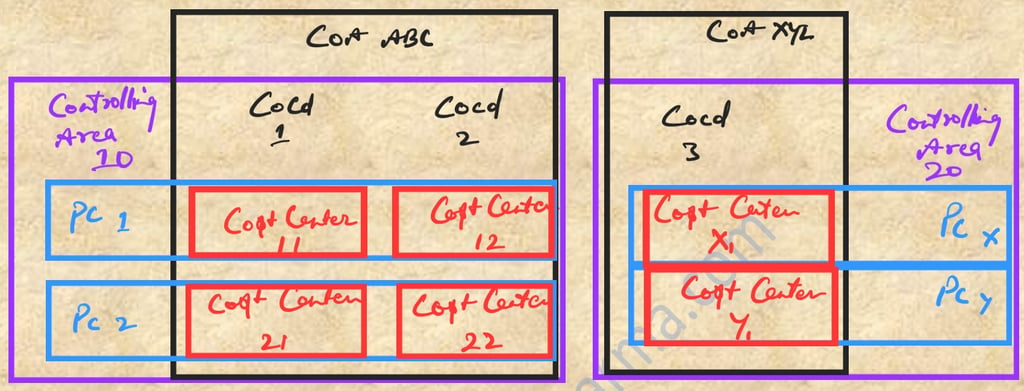
Organization Structure In SAP
FI n CO Org Structure
SAP FINANCE
Bhupender Sharma
7/2/20253 min read



Organization Structure In SAP
Every system designed to capture Transactional Data always have it's own structure based on which it captures and then represent the Transactions in Reports.
For reference Oracle is having Parent and Child relationship however in SAP such structure is a bit rigid and one need to play arround within set boundaries.
Main benefit of having such a fixed boundaries is that comparison among simila object becomes easier and Report and Custom development can be done with ease since same objects will be found at same hierarchy level.
If you see above the organisation structure of Fl & CO are almost parallel to each other and hence known and FICO.
From Fl side, we have already discussed and familiarised with the Chart of Accounts, A/C groups and GL Accounts in my previous blogs.
We shall discuss about SAP org objects and Co objects.
SAP Organisation Objects:-
Client- It is a Technical Object related to SAP LANDSCAPE *. We can understand it as a partition in our Home PCs, just like C Drive, D Drive etc. Although in SAP client are defined as Development, Quality and Production.
It may depend upon organisation to organisation whether they want to create partitions is same server or they want to have independent servers for each client.


Company- It is a mandatory object to be created in SAP before any other object. Even if your client is operating in a single place and has a single business with the same management. In SAP Company needs to be defined. It captures the name address, place, language & country details.
In case there are multiple companies operating under different management when required to be consolidated for management reporting, the Company is the object at the level of which such consolidation happens.
Company Code- This is the legal entity that needs to be created as per the law of the land at the level at which Financial Statements (Balance Sheet and P/L statement) are to be prepared and submitted to the Government authorities.
The above statement defines the point of identification at which level the Company Codes to be created in SAP, basically the starting point around which what organisation structure to be defined & created.
N number of company codes can be defined under a single company.
Imp Note:- Same Chart of Accounts can be assigned to multiple company codes and the required GLs can be extended to the desired company Code.
For example, if GL 10000 is part of the Chart of Account ABC COA but it was extended only to XYZ ltd. and not extended to LMN ltd. then GL10000 can only be posted within Company Code XYZ ltd. only, Although COA ABC in assigned to both Company Codes.


Controlling Area- Just like FI Company Codes, Controlling Area is defined in CO. FI is for External Financial Reporting; on the other hand, CO is for Internal Management Reporting. Since there can be multiple Company Codes operating under the same Management, the Controlling Area can also be assigned to multiple Company Codes.
Profit Center(s) - These are the lowest organisational units in SAP at which a complete set of Trial Balance can be derived from the System. Therefore, Management performance can be reviewed at the level of Profit Centers. Moreover, Profit Center are part of the Controlling Area; they can be extended to multiple Company Codes like GLs
If we consider FI as a vertical reporting structure, we can easily consider CO as a horizontal reporting structure. One for external andthe other for Internal.
Cost Center(s) - Cost Centers are the cost objects used to capture costs incurred la a particular company code under a particular profit Center. By the structure, Cost Center are defined at the lowest levels, but these objects only record Costs and therefore a complete Set of Trial Balance is not available at Cost Center level.
Since Cost Centres are defined at a combination of Company Code and Profit Center, one can not be used across Company Codes.


I hope from the above representation, the linkage among COA (Chart of A/C), Controlling Area, Company Codes, profit Center & Cost Centers must be understood.
There are a few other organisational objects like Business Area, Functional Area, and Segment. These will add more dimensions to the Reporting structure of an organisation and shall be used if more dynamic reports are needed.
